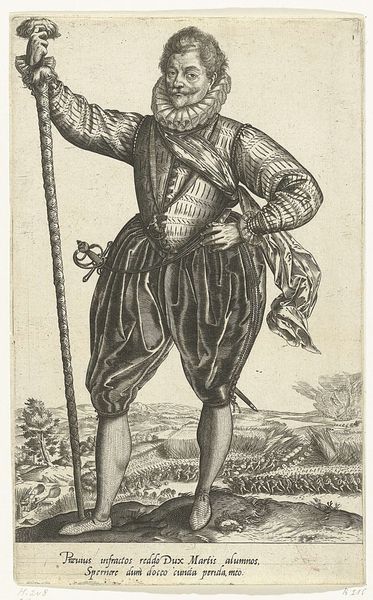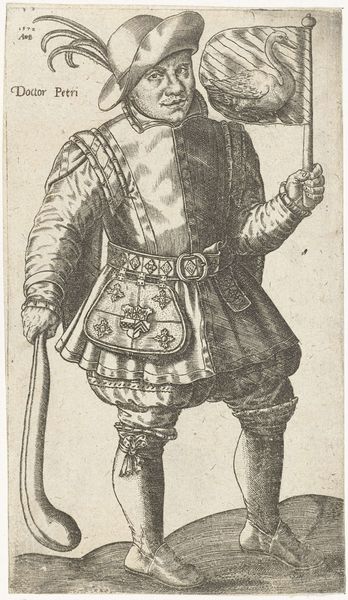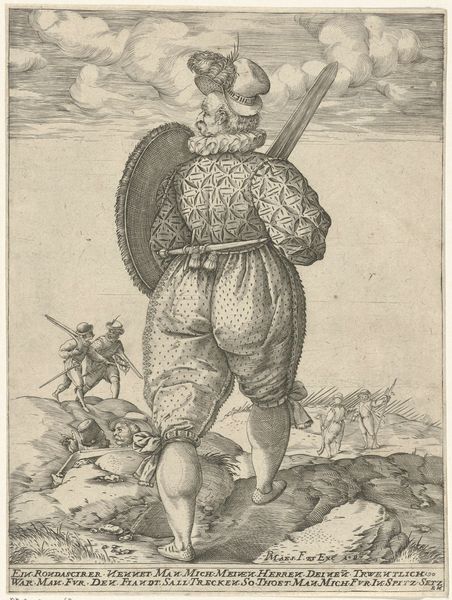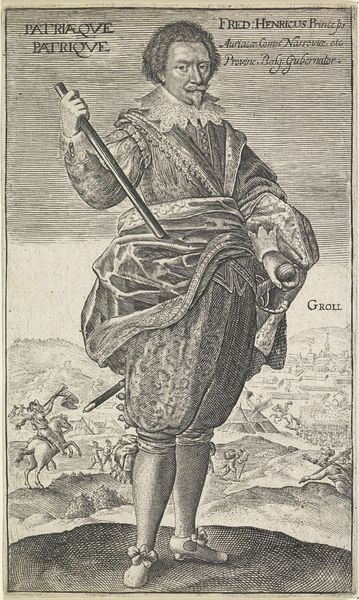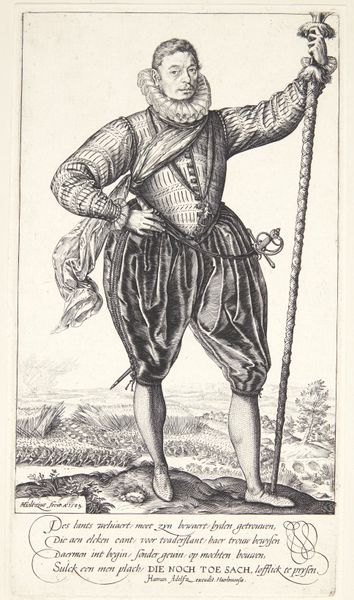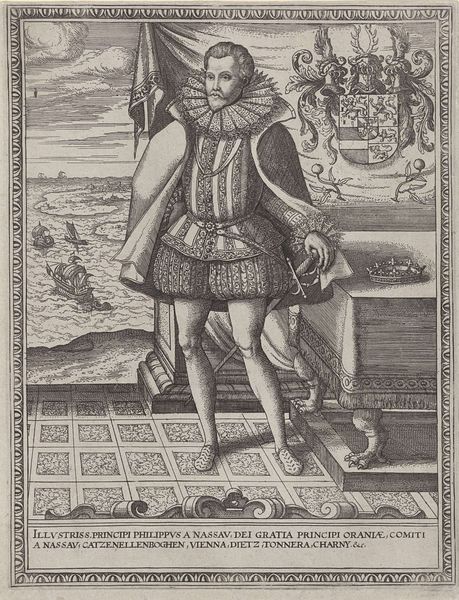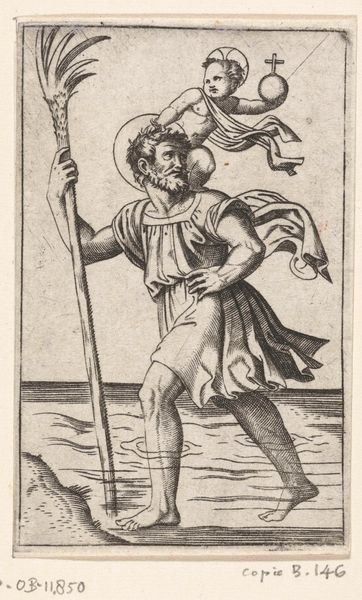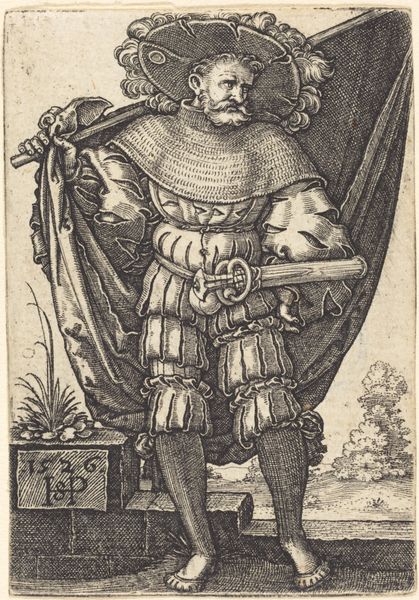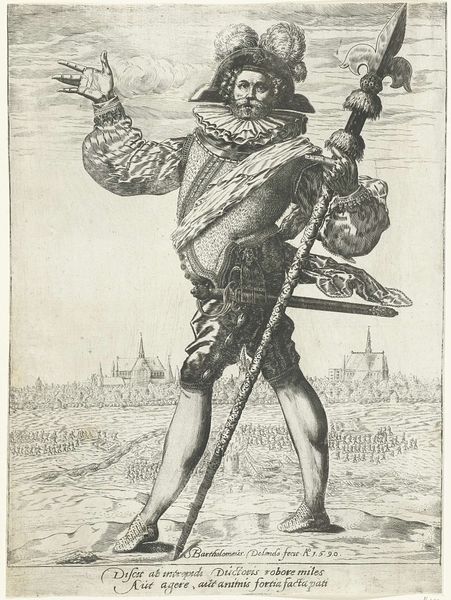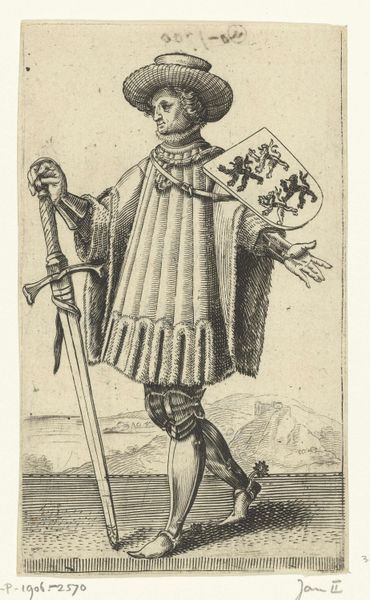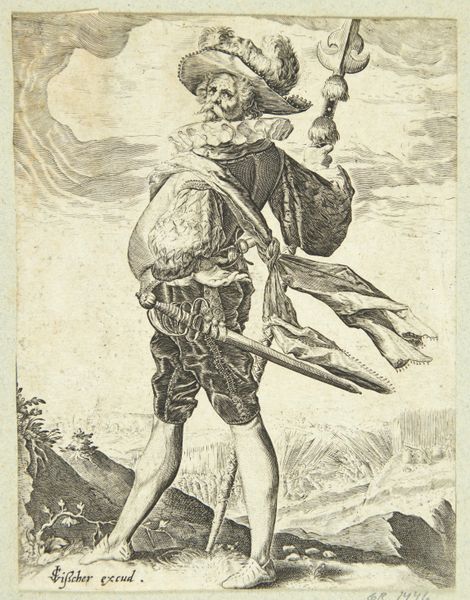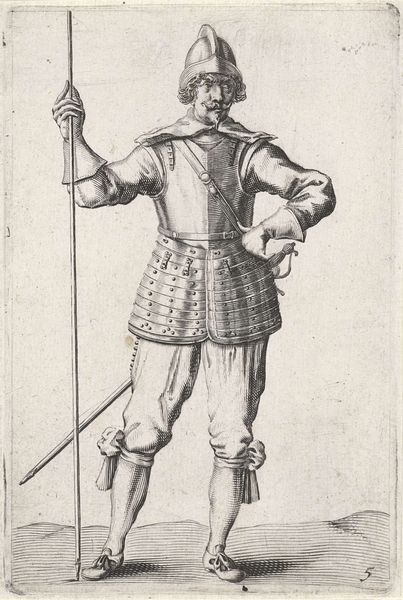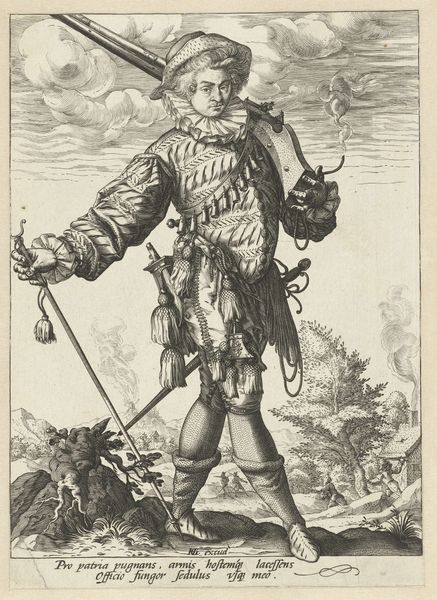
print, engraving
#
portrait
# print
#
pen illustration
#
caricature
#
figuration
#
surrealism
#
line
#
portrait drawing
#
history-painting
#
northern-renaissance
#
engraving
Dimensions: height 223 mm, width 153 mm
Copyright: Rijks Museum: Open Domain
Editor: Here we have Floris Balthasarsz van Berckenrode’s “Soldier with Lance and Sword” from 1597, rendered as a print. It's quite detailed! What strikes me most is the contrast between the soldier’s ornate attire and the chaotic battle unfolding in the background. How do you interpret this work? Curator: This print offers a fascinating glimpse into the material culture of warfare in the late 16th century. Consider the labor involved: the soldier's elaborate clothing, the forging of his weapons, the production of paper and ink for the print itself. These weren't separate spheres, but intertwined industries fueled by conflict. Notice the inscription – can you see how it speaks to the soldier’s loyalty? Editor: Yes, the inscription! "The country’s welfare must be protected by those who in every way prove their loyalty to the fatherland." Curator: Exactly! So, let’s think about who might have commissioned this print, who consumed it. Was it intended as patriotic propaganda, reinforcing the idea of a loyal soldier protecting the “fatherland”? What sort of impact would affordable printed media like this have on fomenting proto-nationalism during the protracted Dutch Revolt? Editor: That's a really good point. Thinking about it as a piece of propaganda shifts my understanding completely. It makes me think about how images were used to shape public opinion and justify conflict. Curator: Precisely. The very *act* of producing and distributing this image was part of the ongoing social and political struggles of the time. We see the convergence of craftsmanship, military power, and emerging forms of mass media. Editor: It's amazing how much a seemingly simple print can reveal about the economic and social context of the time. I never would have considered the production process in such depth without your insights. Curator: Indeed! Focusing on materiality and modes of production allows us to challenge traditional art historical narratives and see these images as active agents in historical processes.
Comments
No comments
Be the first to comment and join the conversation on the ultimate creative platform.
